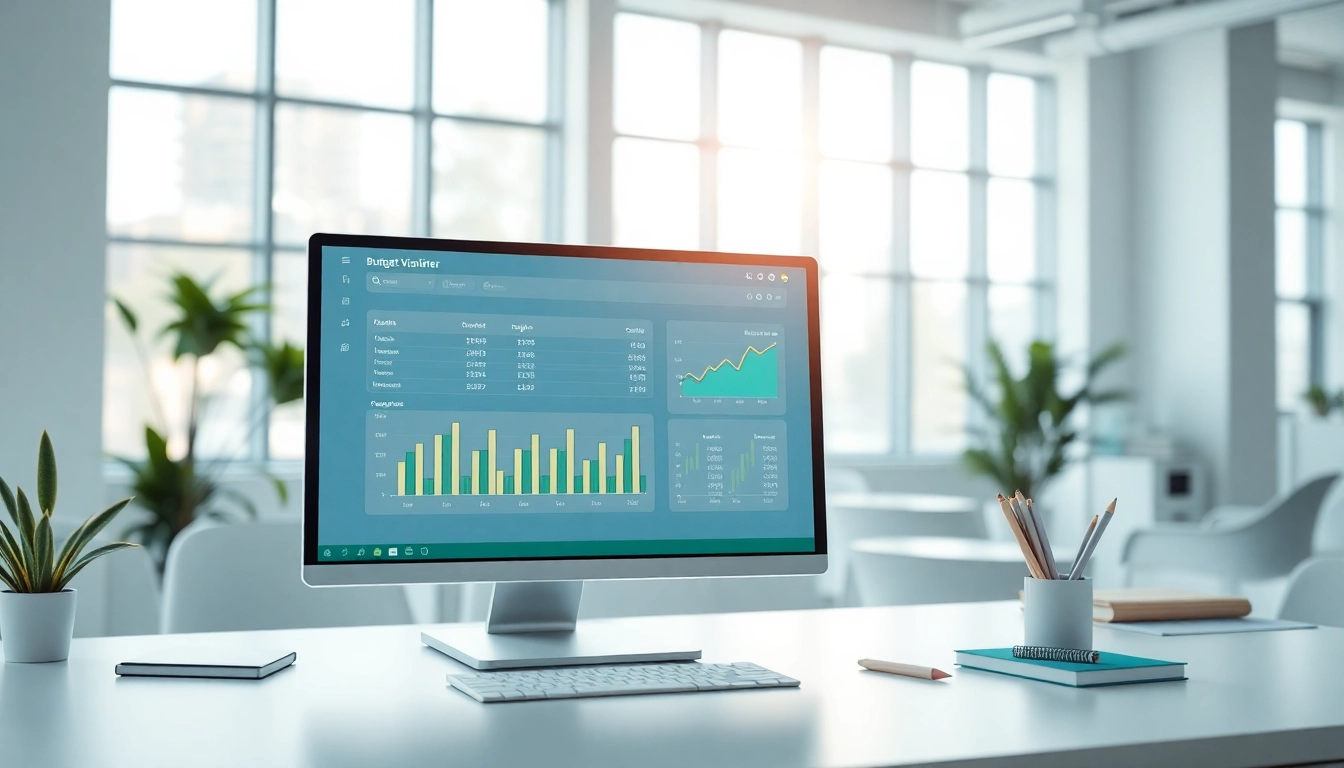Understanding the Budget Visualizer
What a Budget Visualizer Is
A budget visualizer is a powerful tool that allows individuals and organizations to create detailed, visual representations of their financial plans. Unlike traditional budgeting methods that rely heavily on spreadsheets and textual data, a budget visualizer translates your financial information into visual formats: graphs, charts, and other user-friendly presentations. This helps users easily comprehend their spending habits, income streams, and overall financial health. With the proliferation of digital tools, a budget visualizer has become indispensable for anyone aiming to track their finances effectively.
Key Features to Look For
When choosing a budget visualizer, consider the following key features:
- Interactive Dashboards: Look for visualizers that offer interactive features, allowing you to click on elements to get more details, which enhances user engagement.
- Customizable Reports: Tailor your financial reports to highlight the metrics that matter most to you. This can include spending categories, monthly income, and savings goals.
- Mobile Compatibility: A visualizer that works on various devices ensures you can track your finances on the go, making your budgeting efforts more flexible.
- Data Importing Options: The ability to easily import your financial data from banks and other financial institutions can streamline the budgeting process significantly.
- Support for Various Financial Instruments: Whether you’re budgeting for savings, investments, or debt repayment, ensure the tool can handle multiple financial assets.
Benefits of Using a Budget Visualizer
The benefits of utilizing a budget visualizer are numerous:
- Improved Understanding: The clear visual representation of financial data makes it easier to understand complex information quickly.
- Enhanced Motivation: Seeing visual progress toward your financial goals can boost motivation to stick to your budgeting plans.
- Better Decision-Making: With a clearer view of your finances, you can make informed decisions about where to cut back and where to invest further.
- Time Savings: Automating data input and calculations can significantly reduce the time spent managing finances.
Setting Up Your Budget Visualizer
Essential Tools and Software
Before diving into budgeting, it’s pivotal to choose the right tools and software. Look for budget visualizers that are user-friendly and fit your technical environment, whether you’re operating on Windows, Mac, or mobile systems. Some popular platforms include:
- Cloud-based solutions that allow you to access your data from any device with an internet connection.
- Dedicated apps for smartphones that facilitate on-the-go budgeting.
- Desktop software with robust features for comprehensive analysis.
Importing Financial Data
A crucial step in setting up your budget visualizer is importing your existing financial data. This often involves connecting the visualizer to your bank accounts or uploading spreadsheets. Here are steps to ensure a smooth process:
- Gather financial statements, including transactions, assets, and liabilities.
- Ensure that your financial institution supports data integration with the chosen visualizer.
- Follow the platform’s instructions for securely importing your data.
Customizing Your Interface
Customizing the interface of your budget visualizer will enhance user experience and make the tool work more effectively for your specific needs. Some common customization options include:
- Choosing color schemes and graphics that resonate with your personal preferences.
- Setting up alerts and notifications for budget limits or upcoming bills.
- Creating custom categories for your income and expenses to reflect your financial reality accurately.
Best Practices for Budgeting
Creating Realistic Budget Goals
Establishing realistic goals is foundational for successful budgeting. Consider the following strategies:
- Analyze previous spending patterns to set achievable targets.
- Prioritize essential expenses such as housing and utilities before discretionary spending.
- Set short-term and long-term goals to guide your financial planning.
Tracking Your Spending Effectively
Maintaining an accurate tracking mechanism is vital for effective budgeting. Here are methods to make tracking easier:
- Regular Updates: Update your budget visualizer regularly, ideally on a weekly basis, to capture any new transactions.
- Cash Flow Analysis: Review cash flow statements monthly to identify any discrepancies and adjust your budget accordingly.
- Visual Analytics: Utilize your budget visualizer to track spending by category, spotting trends and areas for improvement.
Adapting Your Budget Over Time
Your financial situation is likely to change, which means your budget should also adapt. Keep these points in mind for flexibility:
- Review your budget quarterly to assess your progress and make necessary adjustments.
- Prepare for potential major life events (job changes, marriage, or having children) and adjust budgets accordingly.
- Incorporate buffers for unexpected expenses or reduced income scenarios.
Common Challenges and Solutions
Dealing with Unexpected Expenses
Unexpected expenses can throw off even the best budget plans. Here’s how to prepare for and manage them effectively:
- Create an Emergency Fund: Set aside savings specifically for unpredicted costs, ideally 3 to 6 months of living expenses.
- Review and Adjust: If unexpected costs arise, revise your budget categories to accommodate these expenses without compromising your overall goals.
Avoiding Budgeting Burnout
Budgeting can occasionally feel burdensome, leading to burnout. To combat this, consider these strategies:
- Make budgeting a fun activity by gamifying the process or involving family members.
- Limit how much time you spend budgeting each week; it should be efficient and effective, not a chore.
Maintaining Motivation to Stick to Your Budget
It’s easy to lose motivation over time. Here are methods to maintain your enthusiasm:
- Visualize your financial goals, such as debt-free living or saving for a vacation, to remind yourself of your motivations.
- Celebrate small successes along the way to stay encouraged, like reaching savings milestones.
Measuring Success with Your Budget Visualizer
Analyzing Financial Performance
To measure the effectiveness of your budget visualizer, analyze your financial performance regularly. Here are key metrics to consider:
- Income vs. Expenses: Are you spending less than you earn on a regular basis?
- Savings Rate: What percentage of your income are you managing to save, and how does this compare to your goals?
- Debt Ratio: Evaluate the extent of your debts relative to your income; aim for a debt-to-income ratio of less than 36%.
Adjustments for Improved Outcomes
If your analysis reveals shortcomings, don’t hesitate to make adjustments. Focus on areas such as:
- Reducing discretionary spending categories to redirect funds toward savings or investments.
- Revising income expectations based on career shifts or market changes.
Learning from Financial Trends
Finally, use your budget visualizer data to identify long-term financial trends. Insights can include:
- Identifying seasonal spending patterns, such as increased holiday spending, can better prepare you for annual fluctuations.
- Tracking changes in recurring expenses can reveal opportunities for cost-cutting or better deals.



